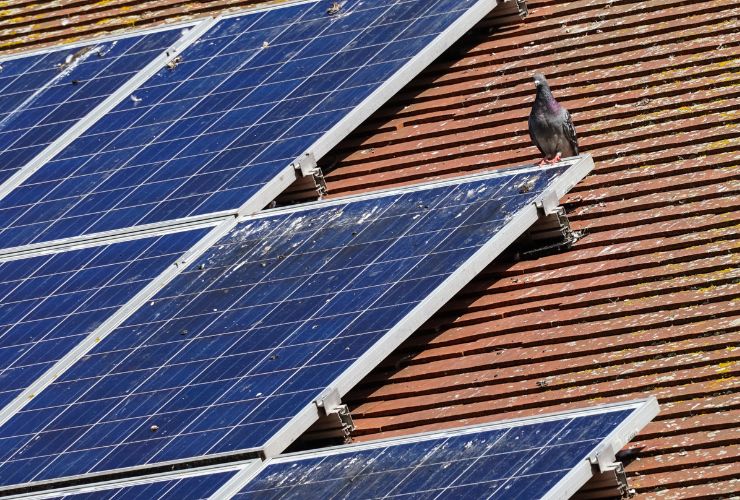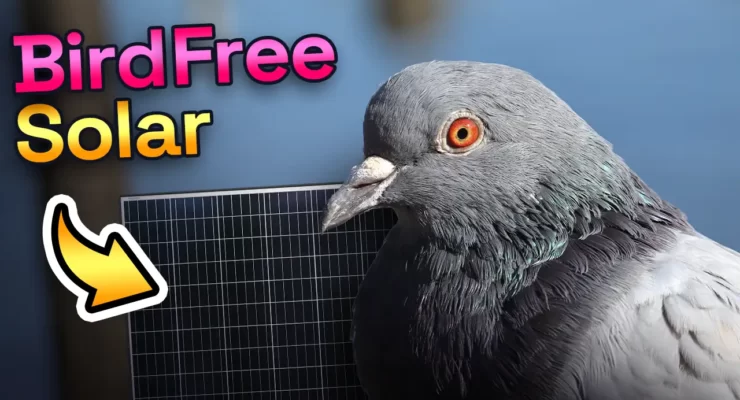Fast read
Solar panels, though a sustainable green energy choice, often attract birds seeking nesting spaces beneath them. This can lead to waste build-up and potential damage.
To protect your investment, several solutions can be employed. Physical barriers, like wire mesh and bird netting, prevent birds from accessing the panel's underside. Using sensory deterrents, such as reflective objects, predator decoys, and sonic devices, can make the area unappealing.
Additionally, repellents, including bird gels and taste treatments, can deter birds. Regular maintenance and cleaning also play crucial roles in keeping the area uninviting. As we embrace renewable energy sources, ensuring a balance between technology and nature is vital for coexistence.
How can I bird proof my solar panels
Solar panels are not just environmentally friendly energy sources; they represent a significant financial investment for homeowners. As more households transition to this renewable energy option, an unintended consequence has surfaced: birds see the space beneath these panels as prime real estate for nesting. This co-habitation might sound harmless, but the truth is that birds nesting under solar panels can pose challenges, ranging from waste accumulation to potential damage to the panels and their wiring. Therefore, bird-proofing your solar panels becomes a top priority.
Physical barriers – your first line of defence
Physical barriers act as robust fortresses, ensuring birds cannot access the area beneath the solar panels:
- Wire mesh: A popular and effective option is the wire mesh. When fixed around the solar panels’ perimeter, it acts as a shield, barring entry. You must tightly fasten the mesh to eliminate any gaps. Additionally, using clamps or clips for installation, rather than screws, can prevent damage to the panels and preserve the warranty.
- Bird netting: For those looking for a less noticeable solution, bird netting is a viable alternative. When pulled taut and adequately anchored, this system forms an impenetrable barrier beneath the solar panels, preventing birds from accessing the sheltered area while ensuring consistent airflow.
- PVC-coated metal mesh: Some birds, being the determined creatures, might attempt to peck through barriers. A PVC-coated metal mesh offers added durability and resistance, ensuring long-lasting protection.

Sight and sound strategies to bird proof your solar panels
Birds, like many creatures, rely heavily on their senses. Targeting these senses can be an effective way to make the area around your solar panels less appealing:
- Reflective objects: Birds are easily disoriented by erratic movements and bright lights. This is where reflective objects come in. By hanging items like CDs, shiny tape, or aluminium foil around the solar panels, the reflected light can make the area seem unstable and uninviting.
- Predator decoys: The animal kingdom is all about the predator-prey relationship. Even the mere silhouette of a predator can send smaller birds into a flight response. Owl or hawk decoys strategically placed around solar panels can serve as a constant reminder of this perceived threat.
- Scare balloons: These are not your regular party balloons. Scare balloons come adorned with large, menacing eyes and patterns designed to intimidate birds. Their effectiveness can be prolonged by occasionally shifting their positions.
- Sonic devices: High-frequency sounds, undetectable to the human ear, can be distressing for birds. You can place devices that emit these frequencies near solar panels to deter visitors.
- Bird distress calls: Just like humans, birds respond to distress signals. Devices that emit these calls can signal perceived dangers, ensuring birds keep their distance.
Repellents – the last line of defence
Repellents can be the final straw, making the area outright unattractive to birds:
- Bird gel or spray are non-toxic substances designed to create an uncomfortable landing zone. When applied to the edges of the solar panels, they deter birds from sitting down.
- Taste repellents: Birds are curious creatures, often pecking at new objects. Taste repellents can be applied to exposed wires or other perching zones. The unpleasant taste serves as a strong deterrent against repeated visits.
Regular maintenance
Taking care of your solar panels means more than just scaring birds away. Regularly checking and cleaning them is important. Keep the area around your panels clean to avoid attracting birds. This helps prevent problems early on.
Check your panels every month for bird nests or droppings. Cleaning them often removes dirt and keeps them working well.
Clear the area around your panels of anything birds might use for nests. Use bird-friendly tools like nets or spikes to keep birds away.
Keep an eye on how well your panels work. If they suddenly work less, birds might be the cause. By doing these things, you keep your solar panels working well and help the environment.
Summary
Solar panels stand as a symbol of sustainable living, offering a path towards reducing our carbon emissions and embracing a need for clean energy sources. However, alongside their benefits, they present unique challenges, particularly concerning our feathered friends. Birds, driven by instinct, may see solar panels as ideal nesting spots, posing potential risks to both the panels and the birds themselves.
Navigating this delicate balance requires a multifaceted approach that incorporates understanding, patience, and the strategic use of tools. Implementing a combination of barriers, deterrents, and repellents can help dissuade birds from nesting on or near solar panels while ensuring the humane treatment of wildlife. From physical barriers like nets or screens to visual deterrents such as reflective objects or predator decoys, there are various methods available to discourage bird activity.
Furthermore, maintaining a clean and clutter-free environment around the solar panels can make them less appealing to birds seeking nesting sites. Regular inspections and cleaning sessions are crucial not only for preserving the energy efficiency of the panels but also for detecting and addressing any bird-related issues promptly.



